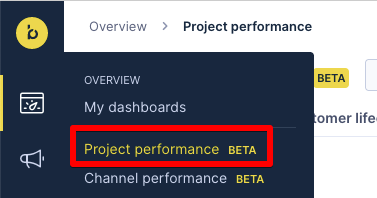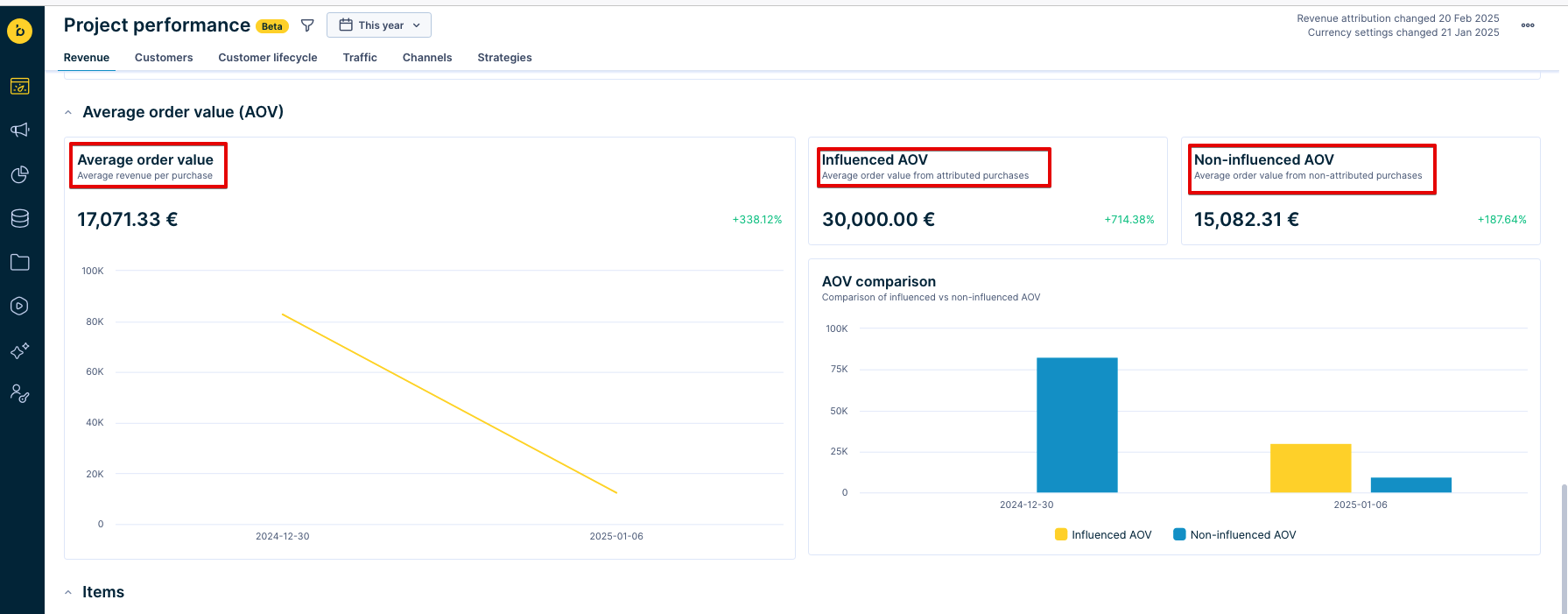Project performance
Project revenue dashboard evaluates marketing activity performance. It provides a topline overview of revenue details from specific campaigns and channels throughout your project. This dashboard is part of the Performance dashboards category.
Watch our video chapter on Project performance for a visual walkthrough.
Project revenue dashboard
Follow these steps to access the dashboard:
- Go to Overview> Project Performance.

- The dashboard displays automatically generated insights from Bloomreach Engagements.
- To customize the dashboard to fit your specific needs, learn how to modify it.
- For a better understanding of the metrics on the dashboard, refer to the glossary.
Project revenue dashboard use cases
Based on the metrics and definitions built in Project revenue dashboard, you can leverage the insights on the following situations:
Validating platform ROI
To validate platform ROI, analyze Revenue, Influenced Revenue, and Non-influenced Revenue. This helps assess the platform's financial impact, allowing for a comprehensive evaluation of its contribution.

Overall campaign effectiveness analysis
Assess your marketing campaigns by comparing Influenced revenue to Non-influenced revenue. This comparison reveals how much your campaigns contribute to overall revenue, providing insights into their effectiveness.
Channel performance optimization
To optimize your marketing budget, analyze Revenue per channel and Revenue share. This helps identify the most successful channels for driving revenue, allowing you to allocate resources efficiently.

Order value optimization
Increase customer spending by monitoring Average order value (AOV), Influenced AOV, and Non-influenced AOV. Tracking these metrics shows how marketing initiatives impact the average spend per order, guiding strategies to boost purchase values.

Trend analysis and forecasting
For strategic planning, analyze trends in Revenue, Purchases, and AOV over time. Identifying patterns in these metrics allows you to forecast future sales performance and adjust your marketing strategies accordingly.
Updated 8 months ago
